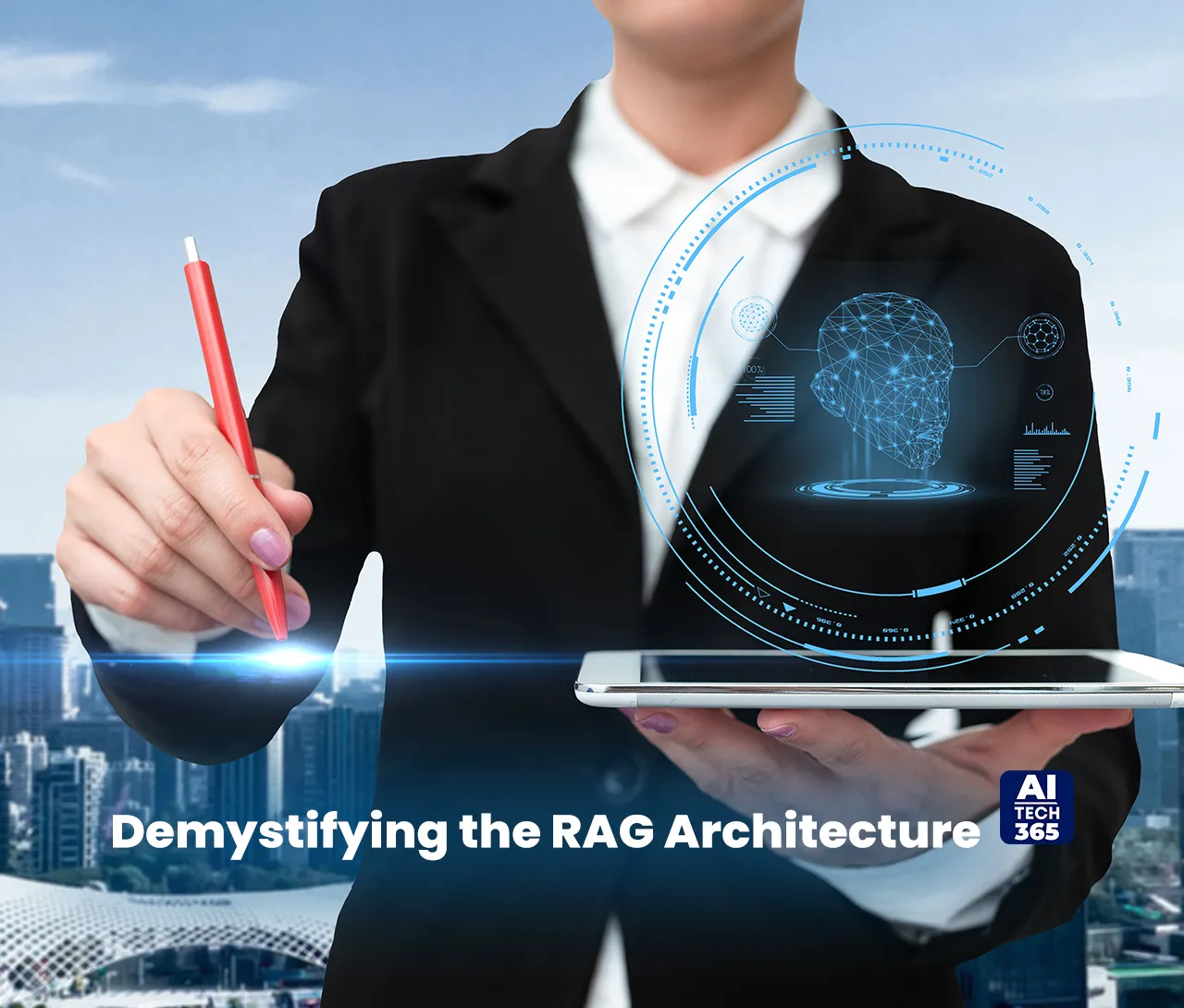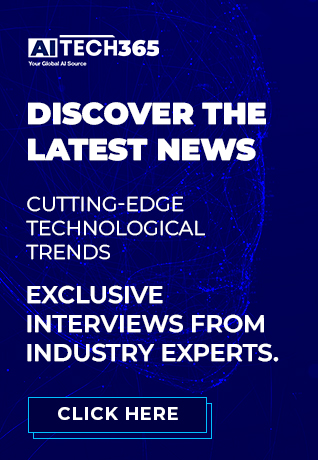AI tech leaders face an exciting but risky world in generative AI. The opportunities are huge, but so are the dangers. We’ve all seen the impressive writing, clever code snippets, and interesting market analyses created by large language models (LLMs). Beneath that impressive fluency lies a serious flaw: the tendency to hallucinate. This means creating believable but false information that isn’t based in reality. Confidence, we’ve learned, is not a reliable indicator of correctness. Accuracy and trust are key issues. They can hurt business adoption, even as technology improves. Retrieval-Augmented Generation, or RAG, is more than a buzzword. It marks a key change in how we deploy reliable and trustworthy generative AI in businesses. It’s the bridge between raw linguistic prowess and actionable, verifiable intelligence.
Demystifying the RAG Architecture
RAG tackles a key issue with pre-trained LLMs. Their knowledge is stuck in time. It relies on the data they were trained on, which is often too general. This limits its relevance to your specific business needs. Picture a highly knowledgeable scholar. They haven’t read any books published after they graduated. They also don’t have your company’s confidential reports, customer databases, or the latest product manuals. RAG provides that scholar with real-time access to a curated, dynamic library.
The process is elegantly synergistic. When a user poses a query, RAG doesn’t immediately task the LLM with generation. Instead, it first acts as a sophisticated research assistant. It searches a specific knowledge base. This base can include your own databases, internal documents, industry reports, or trusted sources from outside. Then, it pulls the most relevant information related to the query. This retrieval goes beyond a simple keyword search. It uses dense vector embeddings to capture meaning. This helps find passages that match the intent of the words, even if the phrasing is different.
RAG first gathers verified, rich information. Then, it provides the original query and the retrieved evidence to the LLM. The task is clear: “Make a response using this evidence.” The LLM combines the query with the gathered information. It creates a smooth reply based on real data, not just memory. This decoupling of knowledge storage from generation is revolutionary. You update your knowledge base. The AI then instantly reflects that change. This happens without the high cost and complexity of retraining large foundation models. Large enterprises currently dominate RAG usage, making up 72.2% of the market, with content generation accounting for over 34.6%.
Also Read: Smarter AI, Bigger Lies: Why Advanced AI Models Hallucinate More, and why it matters
Why Hallucinations are More Than Just Glitches

In a consumer setting, a chatbot creating a silly product feature can be a slight bother. In the B2B and enterprise sphere, the stakes are exponentially higher. Imagine a legal AI assistant misreading a contract clause from an outdated database. This could lead to confusion and mistakes. The AI might interpret terms differently than intended. So, it’s crucial to ensure the database is updated regularly. Also, training the AI with current legal standards helps reduce errors. Keeping everything accurate protects clients and avoids potential disputes. This mistake could risk a multi-million-dollar deal. Picture a financial analyst tool that confidently makes market forecasts. It uses outdated economic data, which can lead to poor investment choices. Imagine a support bot giving engineers wrong troubleshooting steps for vital systems. These steps come from an outdated manual. These aren’t just risks; they are real problems. They can hurt compliance, revenue, reputation, and safety.
Accuracy isn’t a ‘nice-to-have’; it’s the bedrock of trust and utility. RAG directly combats the root causes of hallucination. Tethering the generation process to clear evidence helps the LLM rely less on its possibly flawed or incomplete knowledge. The model gets the facts it needs. This restricts its creativity to interpreting and expressing these truths, not inventing them. Think of it as giving the AI guardrails and verified source material. The result is answers that are more accurate, relevant, and connected to trusted sources. Citing sources is key. It lets you reference the exact document or data point that shaped the response. This boosts transparency and enables human verification. Advanced approaches like DoRA (Document-Retrieval-Augmented) improve accuracy up to 90.1%, with a relevance score of 0.88.
Implementing RAG
Adopting RAG isn’t just a simple switch. It’s a strategic move that needs careful planning in many areas. The foundation, quite literally, is your knowledge base. Its quality dictates the quality of your RAG system. Garbage in, garbage out remains a universal law. Tech leaders should regularly curate, clean, structure, and update data sources for the retrieval system. This means breaking down data silos. It also means setting strong data governance rules and ensuring formats work together. The knowledge base should be broad to handle expected questions. It must stay focused to avoid adding irrelevant details that can confuse retrieval.
The retriever component itself demands careful selection and tuning. Choosing between sparse retrievers, like BM25, and dense retrievers using transformer embeddings greatly impacts precision and recall. Sparse retrievers are great for keyword matching. In contrast, dense retrievers focus on understanding meanings. Hybrid approaches are often optimal. Fine-tuning the retriever on your domain data is often needed for top performance. This helps it learn the unique language and context of your business. Metrics such as Hit Rate and Mean Reciprocal Rank are key KPIs. They show how well the system finds relevant evidence.
Integrating the retrieved context with the generator (LLM) is another critical junction. Techniques vary from basic concatenation, which places evidence next to the query, to more complex methods like Fusion-in-Decoder. In Fusion-in-Decoder, the LLM focuses on the retrieved passages while generating responses. Prompt engineering is key. It focuses on clear instructions that support evidence-based responses. This helps avoid unsupported speculation. Monitoring is essential. It tracks fluency, factual accuracy, and citation fidelity to the source documents. Expect an iterative process of refinement.
Cost and latency are practical realities. Running retrieval and then generation involves multiple steps. Improving how quickly we retrieve data and enhancing the knowledge base is crucial for better user experience. This is especially true in real-time apps. Picking the right-sized LLM for the task is crucial. You need to balance its ability with the cost of computation. This is an important architectural choice. Finetune-RAG, which adjusts for domain-specific tasks, offers up to 21.2% improved results.
The Tangible Impact
The theoretical advantages of RAG translate into concrete business value across diverse functions. Customer support centers using RAG-powered chatbots see fewer escalations. Agents get quick, clear answers to tough technical questions. These answers come from the latest manuals and ticket histories. Sales teams use RAG to create tailored, data-driven proposals. These proposals feature real-time competitor analysis, helpful client case studies, and clear product specs. This approach directly increases win rates. Legal departments use RAG systems to quickly find relevant clauses in large contract databases. This speeds up review cycles and reduces risk. R&D teams use it to keep up with the latest science and patents. This helps them base their innovation strategies on current, verified information. Generative AI has changed. It went from being an unreliable novelty to a trusted partner in business. Now, it adds real value based on enterprise truth. As of mid-2024, 41% of enterprises had already deployed generative AI in at least some departments, with another 30% in active implementation, suggesting RAG is rapidly becoming foundational for intelligent automation strategies.
The Road Ahead
RAG isn’t just a trend; it’s a key principle for reliable enterprise generative AI. Its evolution is rapid. Retrieval techniques are getting better. They now handle complex multi-hop reasoning. This means answering a question involves combining information from different documents. Integration with sophisticated query planning and decomposition engines is emerging. Critically, RAG is becoming a cornerstone of enterprise AI governance. It ensures that approved data sources are used and that sources can be tracked. This builds an audit trail. It also helps verify compliance with regulations and supports ethical AI use.
Multimodal RAG uses images, audio, and structured data to grow its reach. Its main value remains clear: it links generative power with reliable, verifiable knowledge. For AI tech leaders, mastering RAG is no longer optional. It’s key for going beyond demos and pilot projects. It helps us deploy generative AI systems that deliver consistent value reliably and at scale. It turns generative AI from a risk into a valuable tool, based on your business data. The era of confident guesswork is ending; the era of grounded intelligence, powered by RAG, is here. Embrace it. Use it wisely. Unlock the full potential of generative AI for your business. The future belongs to systems that know not just how to speak, but what to say based on what is demonstrably true.





